8 inbound marketing tactics used by the most successful SaaS companies

You'd probably find it strange if a salesperson came up to you in the grocery store to try selling you a hairbrush. In a few years, the same might be true for most products.
The buying experience is quickly moving towards a low-touch/no-touch model. We're not only buying shampoo without speaking to sales, but also complex software, cars, and even airplanes.
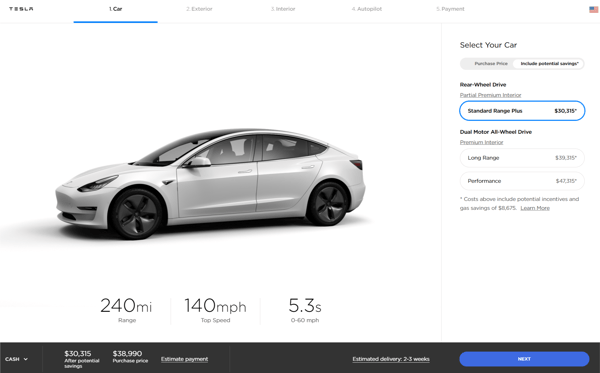
So what does this mean? It means that things are changing, and changing fast. There is a serious disruption going on in the entire buying journey, and companies that are unable to keep up will be left behind.
This is true in most industries, but even more so for companies operating in the highly competitive SaaS market.
It's no longer enough to rely only on traditional customer acquisition channels such as outbound marketing and cold calling. Not only due to the ever-increasing competition, where the biggest pockets will win on traditional channels, but also due to the general business model of a SaaS.
The main difference from the traditional on-premise software solutions is that the upfront investment and switching costs are lower. This gives the business model a unique opportunity when it comes to generating leads and customers through their website that few other industries in the B2B area can match.
On the other hand, customer expectations are high, and the competition is tough.
To capitalize on this opportunity, you need to turn your website into your main customer acquisition channel. It needs to be seen not as a billboard but rather your number one sales representative.

Building a site that "looks good", doing a bit of ad hoc blogging while treating your social media channels as an RSS feed, simply won't be enough to establish a competitive edge.
So what tactics and strategies are the market leaders leveraging to stay ahead of their competitors?
1. They have a strategy-first approach (but don't get stuck there)
Before you start chopping down the trees to get through the forest, you need to know your purpose and direction.

The essence of inbound marketing is to focus on helping rather than selling. It's about establishing a system that:
- Enables you to focus and know how to measure success
- Identifies your best clients, and helps you get more of them
- Knows what your prospects "jobs to be done" is
- Answers the questions your target buyer has
- Adds value throughout the buyer's journey
- Triggers them to take action
Sounds pretty easy on the face of it. And yet, most companies get it wrong. Companies tend to spend too little time on planning and strategy. The result is usually failure. They blog for a little bit, see little to no results, and then they stop and go back to whatever they were doing before. They conclude that inbound does not work, and they end up ignoring a critical sales channel, potentially leading to competitors who do put them out of business.
Now I'm not saying you should be planning forever. Sooner or later, you need to take the plunge into the deep part of the pool. But make sure you focus on the most critical elements first rather than on what "sounds fun" at the moment, and then tweak and optimize on an ongoing basis.
2. They talk to their customers (all the time)
There is no better way to serve your customers than to ask them how.
One thing that keeps coming up when speaking to successful business leaders is the importance of spending as much time as you possibly can speaking to your current and potential user base. Both to understand how you can better serve them and to understand how they interact with and use your product.

They also know that this communication is a two-way street, and provide current and potential customers with multiple ways to interact with their brand.
And please stay away from using no-reply email addresses for your marketing emails, give people a chance to interact with you.
3. They have aligned their website with the modern buyer
You only have a few seconds to convince a visitor to stay on your site.
The internet, social media, and companies such as Airbnb, Netflix, and Uber, have completely changed our daily lives.
Our expectations are moving toward having an almost completely frictionless buyer's journey. If we can't find what we are looking for in seconds we get annoyed, leave and go somewhere else.
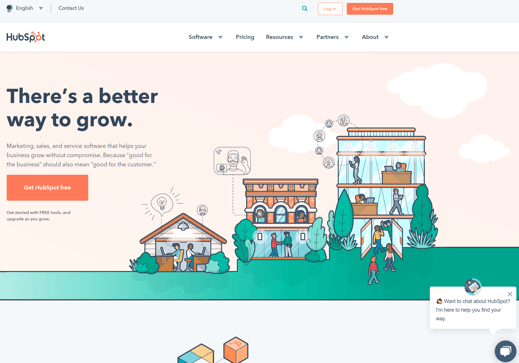
Companies that succeed with inbound don't leave things to chance. They spend a lot of time on continuously tweaking and optimizing their website. Also, they don't see their website development as a one-off thing, but as a never-ending project. Website analytics, user testing, heat maps and exit surveys are commonly used tools to improve site performance.
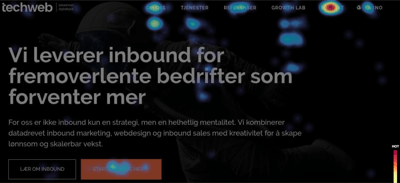
To start, go back to the second point and start talking to your customers to understand how they want to buy, what they like on your site, what they dislike, and so on.
Also, stay away from the marketing trap of using "fluffy wordings" (unless you're Apple or a similar company and everyone already knows exactly what you do). It drives people crazy not being able to understand what a company does and being bombarded with marketing buzzwords and phrases that ways absolutely nothing.
Dare to be clear and concise, and you'll be well rewarded.
4. They aim to help, not to sell
If you're struggling with a high churn rate and low retention rate you likely have a sales problem, not a customer service problem.
The most successful SaaS companies today have completely moved away from a silo-based approach where sales is everything, marketing is something, and service/support is (almost) nothing.
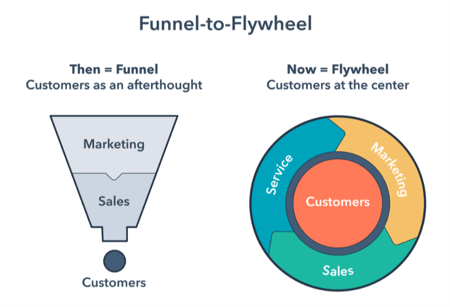
They know that their best sales representative (even better than their website) are their current customers. As such, they spend a lot of time and resources providing the best possible experience to their customers.
They know that every interaction they have with clients and prospects should focus solely on adding value and being helpful.

5. They focus on answering the questions their buyers have
If you're not providing the answers, someone else will.
SaaS companies succeeding online know that they can't pick and choose what they feel like writing about (if they want to succeed, that is).
They need to focus on answering the questions their prospects have, be it something positive or negative. In addition, they answer it in a way that their prospect understands, using their words, and provide multiple ways to get the answers.
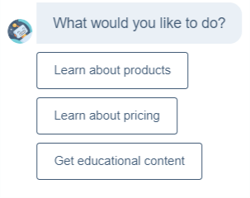
Also, when creating content they don't do so to get bragging rights or to sound smart. It's not the most technical content that wins, it's the content that best answers the questions your buyers have in a format of their choosing.
When it comes to the more uncomfortable topics, such as when the product is not a good fit, what can cause it not to work, faults and issues, etc. you have two options.
You can either answer the question yourself or allow someone else to give them the answer at the price of loss of control.
6. They don't hide their product or pricing
In your buyer’s head:
No online demo = poor UI
No free trial = poor UX
No pricing = expensive product or hard to understand pricing mode
It's not uncommon for software companies to hide their product and pricing behind a contact sales form. Looking at how many options there are today, this is a big mistake.
For most buyers from the "internet era", not being able to see and test the product and know what to expect in terms of pricing equals this product not even being an option.

Through the years, we've heard countless reasons as to why companies should not display their pricing and product on their website. The most common ones are competitors getting insights and running the risk of someone not contacting them as they have already seen the product and know the price.
While this might carry some merit, you should not allow your competitors to dictate how you market yourself.
The missed opportunities of not showing your pricing and product outweigh the risks by a large margin (and your competitors will find out anyway).
And for those of you that have a complex pricing structure, at least provide your prospects with a range and help them understand what might affect the pricing.
7. They make sure to lead with a free trial or freemium product to drive high-value conversions
Sometimes you want to buy at the self-service counter, and sometimes you want to speak with a sales representative.
The reality is that how you want to buy might change from one day to another, depending on a wide array of reasons. To align with this as a company, you need to give your prospects the option to choose.
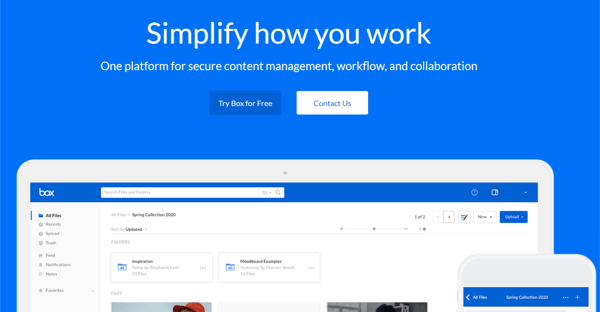
Just as you should not force someone to speak to a sales representative, you should not prohibit someone from doing so if they need help. That being said, where most companies fail is with the self-service aspect.
Spend a few minutes researching successful SaaS companies, and you'll see that they focus heavily on getting people to look at and try their product. The call-to-action buttons leading to a free trial or free product signup are front and center on their site. And for good reason.
They know that if they can get their prospects to try their products through their carefully crafted onboarding experience (sometimes assisted by a sales representative) they have a great chance of getting a new customer.
8. They see sales and marketing as one team with one goal (revenue)
At the end of the day, the goal of the marketing team is not to generate likes, visitors and ebook downloads. The goal is to generate revenue. And the same goes for sales.
Historically, having a marketing team with a revenue goal was not possible, as it was close to impossible to track the revenue generated back to the marketing team.
Today, we can track things down to a very granular level. This is even more true for a SaaS company, where most (if not all) of the buying journey happens digitally. As we have the complete digital footprint, we can trace back the revenue generated from marketing.
Due to this, it's possible (and highly recommended) for the "revenue team", i.e. sales and marketing, to have the same type of high-level goal in the form of revenue generated.
However, the underlying metrics might naturally differ between the various roles within the team.

Knut Pedersen
Knut is the founder and CEO of Spring Agency. He has a genuine belief that entrepreneurship and technology are the new oil that we will live on in the future, and is now building the leading HubSpot and growth partner in the Nordic region. Knut has a degree in computer engineering from Østfold University College and founded the company in 2014 together with his childhood friend Chris.
